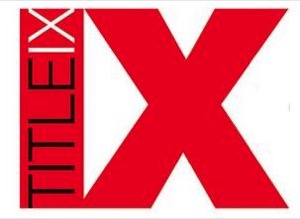
Given the alleged Jan. 14 incident at San Diego State University (SDSU), how transgender students are publicly accommodated in public spaces at schools covered by Title IX is a relevant question.
In the spring of last year the U.S. Department of Education (DOE) released new Title IX guidelines for protections against sexual assault. In that document they made it clear that Title IX protections based on sex apply to sex discrimination based on gender identity.
“Title IX’s sex discrimination prohibition extends to claims of discrimination based on gender identity or failure to conform to stereotypical notion of masculinity or femininity and [Office of Civil Rights (OCR)] accepts such complaints for investigation,” DOE stated in April 29, 2014’s Questions and Answers on Title IX and Sexual Violence. “Similarly, the actual or perceived sexual orientation or gender identity of the parties does not change a school’s obligations.”
So the question becomes one of understanding what the DOE believes schools’ compliance with Title IX means for transgender students. The best answer to that is likely found within settlements that the DOE entered into in two California school districts. These settlements, although specifically addressing Title IX compliance for transgender students in primary and secondary schools, address how transgender students will be accommodated in sex segregated facilities at all schools covered by Title IX.
In the DOE settlement with the Downey Unified School District (DUSD), a teen, transgender girl was not being treated as a female student. In the settlement agreement, it stated “[DUSD] will continue to treat the Student the same as other female students in all respects in the education programs and activities offered by the District, including access to sex-designated facilities for female students at school, and at all District-sponsored activities, including overnight events, try-outs and participation in extracurricular activities on and off campus, consistent with her gender identity. However, the Student may request access to private facilities based on privacy, safety, or other concerns.”
And, in the DOE settlement with the Arcadia Unified School District (AUSD), a teen, transgender boy was not being treated as a male student. In the settlement agreement, it stated “For the duration of the Student’s enrollment in the District, the District will continue to 1.) provide the Student access to sex-specific facilities designated for male students at school consistent with his gender identity; however, the Student may request access to private facilities based on privacy, safety, or other concerns; 2.) provide the Student access to sex-specific facilities designated for male students at all District-sponsored activities, including overnight events and extracurricular activities on and off campus, consistent with his gender identity; however, the Student may request access to private facilities based on privacy, safety, or other concerns; 3.) treat the Student the same as other male students in all respects in the education programs and activities offered by the District.”
Both settlement agreements addressed how transgender students beyond these two individuals would be addressed into the future. In the DOE-DUSD agreement, it stated “The District will continue to review its policies, procedures, and regulations applicable to or governing student participation in all programs and activities offered by the District, and make any necessary revisions or modifications to ensure that all students, including students who do not conform to sex stereotypes, are provided an equal opportunity to participate in all such programs and activities in a manner that does not discriminate based on sex, gender identity or gender expression,” as well as “The District will revise any complaint procedures that apply to sexual and gender-based harassment complaints, and related documents and materials, to reflect Title IX legal and investigatory standards, including the appropriate legal standards, interim measures, investigative steps, and potential remedies.”
The DOE’s take on Title IX and transgender people is, regarding sex segregated facilities, trans girls should be treated as girls; trans women should be treated as women; trans boys should be treated as boys; and trans men should be treated as men.
It doesn’t really matter what one feels about trans people’s access to school sex segregated bathroom and locker room facilities — at schools covered by Title IX, the answer to the question over what sex segregated facilities transgender people use doesn’t include the current shape of one’s genitalia as a determining factor.












Exactly right. Apparently SDSU’s pet dog ate the memo